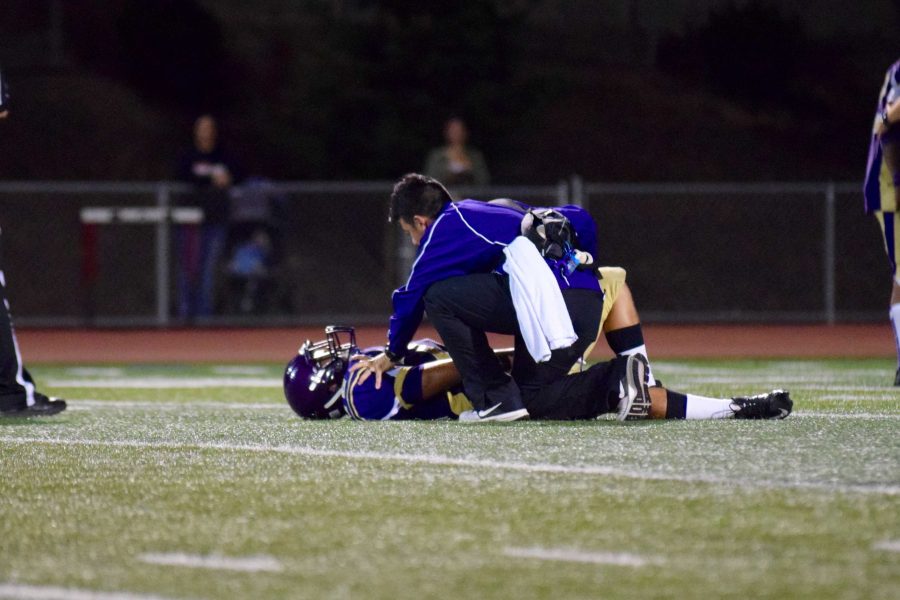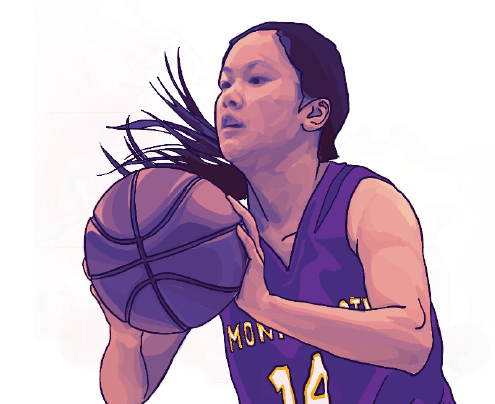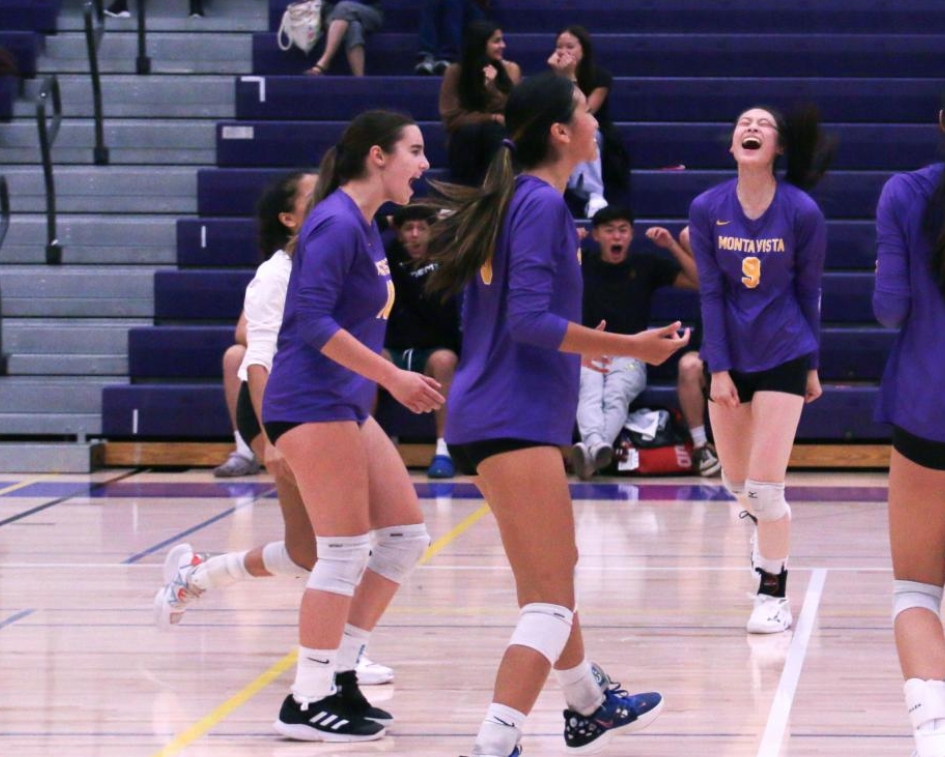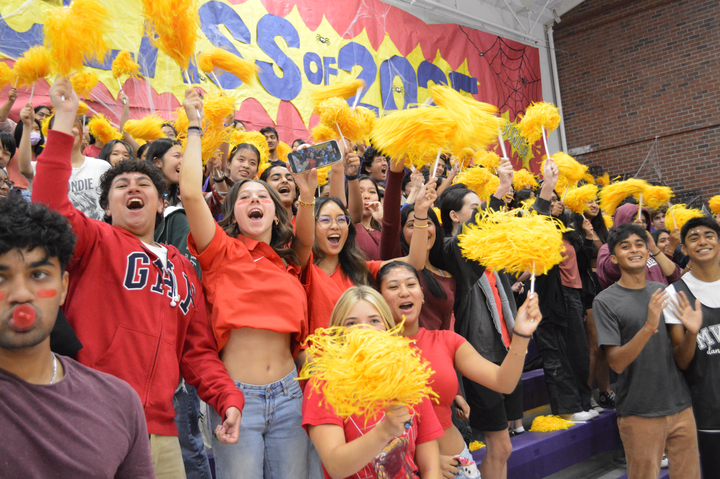“I wish I remembered,” Hashemi said. “But I can’t tell you what happened.”
“I wish I remembered. But I can’t tell you what happened,” -Senior Sassan Hashemi
According to teammates and coaches, a safety from LGHS had drilled his head into the ground from behind. As a result, Hashemi suffered a severe concussion that brought on symptoms such as increased sensitivity to light and loud noises for days after the hit.
Despite more coaches being educated on safer coaching practices at the high school level, experiences like this still occur at MVHS. In the 2015-16 school year, six cases of head trauma proved that concussions are a harsh reality athletes still face. Certified athletic trainer Javier Margarito, however, believes that now is the time MVHS can do something about its student athletes and traumatic injuries.
“Safety is a big priority,” Margarito said. “It’s the whole reason I’m here.”
Margarito introduced new concussion protocols this year, which require all athletes to take a baseline concussion test before they can play a sport. Last year, MVHS athletes did not undergo any concussion tests prior to the season, but a Sport Concussion Assessment Tool was used during each individual sports season. Meant to be a test for head trauma that could be carried out on the field, it was used by MVHS’ trainers before Margarito came to this school. The only problem was that the SCAT couldn’t be used as a definitive test because even if an athlete scored low, it was unknown if the athlete had any head trauma because there weren’t any normal results to compare with. The new protocols in place not only help diagnose physical trauma, but can also ensure proper treatment during school hours as well.
“I think it’s great because a lot of the athletes, or at least when I played, got injured but I feel like a lot of the times they waited until after school,” Hashemi said. “They had to set appointments so it was a lot tougher to get help. Now if Javier can offer help during the school day, I think it’ll make it so much easier for all the student athletes to get the help they need.”
Hashemi supports the new baseline tests which will help student athletes on and off the field. But as far as the concussion he sustained, having those tests in place would not have helped with prevention or even diagnosis because the impact of the hit was so severe.
“What it may have helped out with was seeing how severe the concussion is, seeing how far my score goes down from the baseline,” Hashemi said.
Changing the paperwork
Margarito and athletic director Nick Bonacorsi began talks of implementing more stringent protocols last year. Margarito’s goal was to use his new dual position as health clerk and athletic trainer at MVHS to tend to athletes as students throughout the day as well. Inspiration came from a conference in the summer of 2016 where he learned about procedures at other high schools in Calif., Nev. and Hawaii. Since Margarito came to MVHS part way into the school year last September, he couldn’t implement comprehensive changes across the whole athletic program until this year.
California Interscholastic Federation, the governing body for California high school sports, normally sets concussion protocols for high schools and there’s no regulation that requires MVHS to do baseline concussion tests. These tests are solely the idea of Margarito and Bonacorsi, who wanted to add that extra element to ongoing conversations about athlete safety.
“Take a sport like cross country, they’re not a contact sport but if something were to happen to them while they’re competing or when they’re on a practice run … if there ever was head trauma, we have a baseline for them,” Margarito said. ”Students are people, and they are people outside of here, so say if one of our athletes is injured skateboarding or riding a bike, again there’s another gauge for us to help them.”
Continuing the change
The feedback Bonacorsi has received has been positive even though the new procedure is much longer and more complicated for students than in previous years.
”I think the tests can be frustrating because it’s much longer than what we’ve had in the past,” Bonacorsi said. “But I don’t think anyone could argue why we’re doing it or not see the benefit to why we’re doing it.”
With this extra layer of safety, Bonacorsi hopes that playing sports at MVHS will be less risky.
”Nothing is fail safe. There’s going to be loopholes and errors and abnormalities with everything we do,” Bonacorsi said. “What we’re trying to achieve is just incorporate as much as we possibly can to make things as safe as possible.”




















